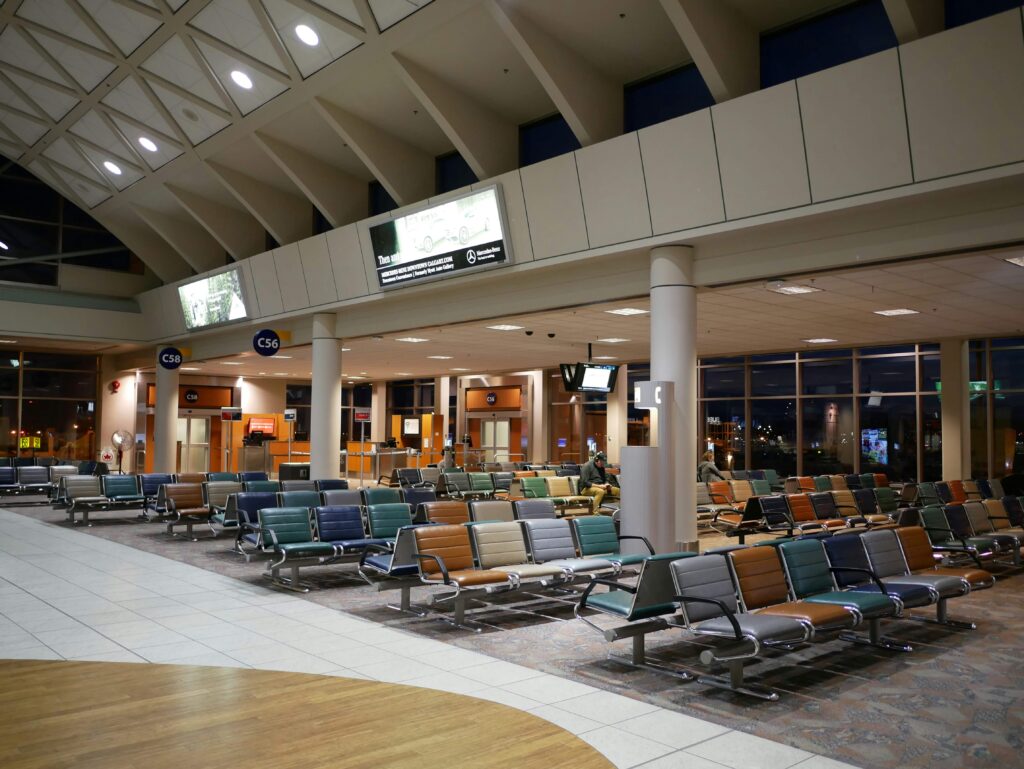Ensuring your devices work in Denmark requires knowledge of local outlets and voltage compatibility....
Travel Guides
Air travelers in the U.S. can now try a quicker way through security. CLEAR and the TSA are testing biometric eGates at three major airports, giving passengers the option to skip ID checks and use a simple facial scan instead.


Long lines at airport security may soon get a little shorter: travelers at three major U.S. airports now have the option to use biometric “eGates,” an automated lane that scans your face instead of your ID.
The system, launched in a pilot partnership between CLEAR and the TSA, is meant to reduce bottlenecks and make airport checkpoints a little less stressful.
If you’ve ever fumbled for your driver’s license at the front of the line, only to find your boarding pass buried on your phone, you’ll appreciate what eGates offer: one simple facial scan.
Within about six seconds, the system verifies your identity against your stored ID and flight information, then opens the gate so you can move directly to TSA screening.
For travelers, the benefits are clear:
The catch: for now, only CLEAR+ members (a subscription that costs $209/year) are eligible.
The eGates are currently being launched and tested in three different U.S. airports:
CLEAR, which already operates fast lanes at over 50 U.S. airports, provides the biometric system, while TSA still maintains full security control. That means the eGate won’t replace the TSA screening but rather would be a faster first step in your traveling process.
Passengers walk up, look into the camera, and the gate opens if the system finds a match. From there, TSA officers continue with bag checks, scanners, and other security protocols.
CLEAR already has millions of members across the U.S., many of whom pay for the service precisely to save time. Frequent business travelers often say they’re willing to pay for every extra minute at the gate. Leisure travelers, however, sometimes balk at the price.
The eGates may change that equation by adding a layer of predictability. Instead of worrying whether your lane will be fast or slow depending on the agent, the eGate provides a standard, six-second process. For people catching tight connections, that peace of mind can be worth the cost.
In many ways, the U.S. is late to the party: the eGates have already been used in Europe and Asia to speed up the traveling process.
For example:
Of course, not every traveler is comfortable with biometric scanning. Privacy advocates argue that handing over your face data for faster travel can feel like a slippery slope. CLEAR maintains that it encrypts and protects all data, while TSA says it retains control over the process.
It remains to be seen just how enthusiastic and skeptical travelers will use the eGates: we will know more once more gates roll out.
Timing is everything. The pilot is not only about testing new technology but also about preparing for a massive surge in U.S. travel over the next few years.
The 2026 FIFA World Cup is expected to bring millions of international visitors who will be moving between multiple host cities. Just one month later, America’s 250th anniversary celebrations in July 2026 will create another wave of tourism.
Airport lines are already notorious, and events of this scale could push them past breaking point. eGates are part of a broader TSA strategy aimed at preventing exactly that.
If the CLEAR pilot proves successful, it could expand to dozens more airports, much like TSA PreCheck and Global Entry did before it. That would mean:
The real question is whether enough travelers will pay for CLEAR+ to make it worthwhile or whether TSA eventually integrates eGates into the standard process, as many international airports already have.
We’ll just have to wait and see.

